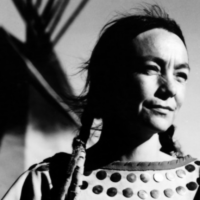
Tantoo Cardinal in Dances With Wolves from 1990. (MGM/Everett Collection)
November 29th, 2011, Archangel Michael through Linda Dillon, talked to me about “the construction of what we think of as New Earth, a new and different, conscious reality” and in the same breath, “the breaking down of illusions. . . such as lack, limitation, death, destruction, disease, greed, lust, control, power.”
He went on to say that we are to translate “the values and the essence of Love, of freedom, of equality into community that is tangible and not restrictive, but supportive of the spirit, that is supportive of the Love, that is supportive of one another, that is supportive of balance and nurturing.”
Below are contemporary Indigenous women standing for this, but also how this idea of equality in community was illustrated in the Haudenosaunee Confederacy, which is the collective name for the Seneca, Oneida, Mohawk, Onondaga, Cayuga, and Tuscarora nations, for hundreds of years. . .
Why the Wet’suwet’en Matriarchs
are Chatelaine Women of the Year
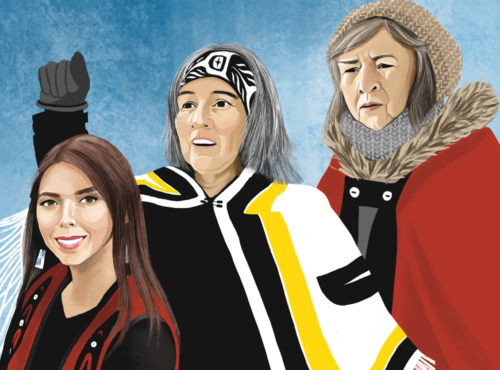
Freda Huson (middle) was arrested alongside two other matriarchs, Brenda Michell (top right) and Dr. Karla Tait (bottom left) on unceded land earlier this year. (Illustration: Stefanie Wong)
By Kelly Boutsalis, Chatelaine, November 23, 2020
https://www.chatelaine.com/living/wetsuweten-matriarchs-women-of-the-year-2020/
The Wet’suwet’en matriarchs are Women of the Year for standing up for unceded lands. Here, matriarch Freda Huson shares her own highlight from this highly eventful year.
Over several days in February 2020, as red dresses swung from trees to honour missing and murdered Indigenous women and girls, a group of incredible women of all ages from the Wet’suwet’en nation drummed, sang and stood in the way of Coastal GasLink’s attempt to install a gas pipeline on unceded lands.
The RCMP eventually arrested seven of those women in front of the Unist’ot’en Healing Centre for occupying the access gate to work sites.
The arrests prompted Canada-wide solidarity actions.
What matriarch Freda Huson is proudest of this year
“No matter how much you tried to roadblock us, we have so much determination. We know police and security follow us around on our lands when we’re trying to teach people how to harvest medicine and how to trap.
“What keeps driving us is our children.
“That’s who we’re doing it for, and if we don’t do it, nobody’s gonna do it, and we’ll lose our culture. We don’t want them telling ‘used to be’ stories, we want them to continue teaching their children and grandchildren to be raised on the land.
“Other mines have destroyed land areas, and our coastal waters are so poisoned that if you harvest a moose [that drank from the waters], you’ll be sick. We’re trying to protect the wildlife we depend on.
“We’ve raised global awareness because more and more Indigenous people are starting to stand up for the land. They think that if we could do it, they can do it, and that’s inspiring to see.”
Meet all Chatelaine’s Women of the Year 2020 here.
Tantoo Cardinal Finally Gets
the Recognition She Deserves

Tantoo Cardinal (Jackie Dives)
https://www.macleans.ca/culture/movies/tantoo-cardinal-finally-gets-the-recognition-she-deserves/
Tantoo Cardinal has sat around countless fires for the camera.
Campfires in the forest and on the prairie, fires in teepees and cabins. And every one of them was fake, with silent propane flames licking logs that didn’t burn and crackling with sound effects.
“In every show I’ve done, it seems like there’s always a fire somewhere,” says the veteran Cree/Métis actor, “and it’s always propane, with that smell.”
But after playing more than 100 roles in film and television, Cardinal finally got a chance to act in front of a real wood fire.
It happened to coincide with her first lead role in a prolific career that spans almost half a century, in Falls Around Her—a movie written for her by Indigenous filmmaker Darlene Naponse and shot on the director’s homeland, the Atikameksheng Anishnawbek First Nation territory near Sudbury, Ont.
She plays Mary Birchbark, a world-famous singer who retreats from the stage and holes up in a cabin on her home reserve in the northern bush, living in fear of an abusive manager.
Fire serves as the film’s central motif, a symbol of its heroine’s spiritual force, which mirrors Cardinal’s own personal history of rage and resilience as an artist and activist fighting to bring Indigenous voices into the foreground.
After a lifetime of supporting roles, Cardinal carries the film with a scarily powerful performance, eloquent even in silence: a mesmerizing close-up shows her staring into the flames of a wood stove as unspoken thoughts and emotions play across her face in the flickering light.
“It was the first time I’ve been on a set with a fire-keeper,” says Cardinal, referring to a traditional role in First Nations ceremonies, “and I was elated to see that on our set, the power of that connection with the fire.”
What Women’s Suffrage
Owes to Indigenous Culture
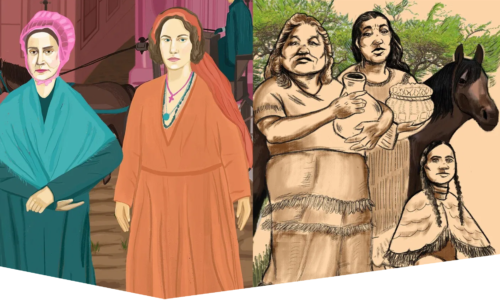
Illustrations by Cindy Echevarria and Jessica Bogac-Moore. From Chronicle Books.
By Bridget Quinn, YES, August 19, 2020
https://www.yesmagazine.org/democracy/2020/08/19/womens-suffrage-indigenous-culture/
It’s been 100 years since the ratification of the 19th Amendment secured voting rights for women—sort of.
In She Votes: How U.S. Women Won Suffrage, and What Happened Next, author Bridget Quinn and 100 female artists survey the complex history of the struggle for women’s rights, including racial segregation and accommodation to White supremacy.
They celebrate the hitherto under-recognized efforts by women of color to secure voting rights for all Americans, and BIPOC-led, diverse, and intersectional movements for equality.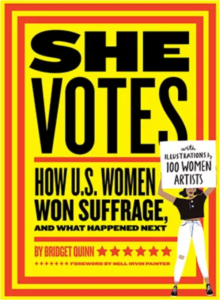
In this excerpt, Quinn describes how White leaders of the women’s suffrage movement were influenced by Indigenous political structures and culture, and how some of this influence took place around Seneca Falls in upstate New York, site of the first U.S. convention for women’s rights.
It’s an under-known fact that the “revolutionary” concept of a democratic union of discrete states did not spring fully formed from the Enlightenment pens of the Founding Fathers, like sage Athena from the head of Zeus.
No, the idea of “united states” sprang from the Haudenosaunee, collective name for six tribes that comprise the so-called (mostly by non-Natives) Iroquois Confederacy: the Seneca, Oneida, Mohawk, Onondaga, Cayuga, and Tuscarora nations. Should you doubt this, check out Congressional Resolution 331, adopted in 1988 by the 100th Congress of the United States, which says as much.
It’s worth noting that the Haudenosaunee Confederacy still thrives today, likely the world’s oldest participatory democracy. . .
For the Seneca and all the tribes of the Haudenosaunee Confederacy, power resided with the people.
All the people.
Norway—though admittedly awesome—may have been the first sovereign nation to “give” women the right to vote, but Haudenosaunee women always had it.
Think of that little girl who was Elizabeth Cady, raised in upstate New York among the Haudenosaunee. She knew from much personal experience that there was such a thing on Earth as women with rights.
The story of a White woman seeing a Native woman sell a horse appears in a few 19th century accounts.
In March 1888, ethnologist Alice Fletcher told a crowd at the first International Council of Women that she once saw a woman give away a horse.
And according to Fletcher, when the woman was asked if her husband would be angry, her “eyes danced” and “breaking into a peal of laughter, she hastened to tell the story to the others gathered in her tent, and I became the target of many merry eyes. Laughter and contempt met my explanation of the white man’s hold upon his wife’s property.”
If this sounds suspiciously like urban legend (rural legend?), here’s Emma Borglum, wife of sculptor Solon Borglum (whose brother Gutzon carved Mount Rushmore), writing on her 1891 honeymoon in South Dakota:
“One day I showed some astonishment at seeing a young Indian woman, in the absence of her husband, give two horses to a friend. She looked at me very coldly and said, ‘These horses are mine.’ I excused myself saying that in my country a woman would consult her husband before giving such expensive presents. The woman answered proudly, ‘I would not be a white woman!’ ”
American women from New York to the Dakotas had eyes to see.
And they saw that Native women had what they did not: agency, property, power.
Calling on:
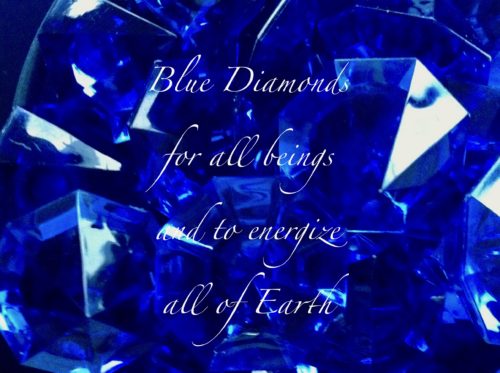
The Mother and Her Blue Diamond Energy of Hope for Balance in Community
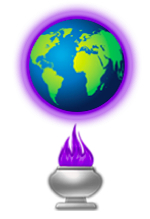
St. Germaine and the Chalice of the Violet Flame
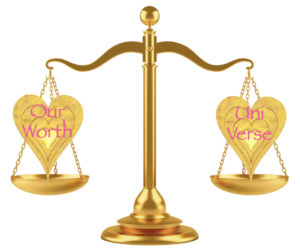
Sanat Kumara and His Scales of Balance: As Within So Without, As Above So Below

